Dashashwamedh Ghat Varanasi 2025 – Best Time to Visit, How to Reach, Timings and Tips
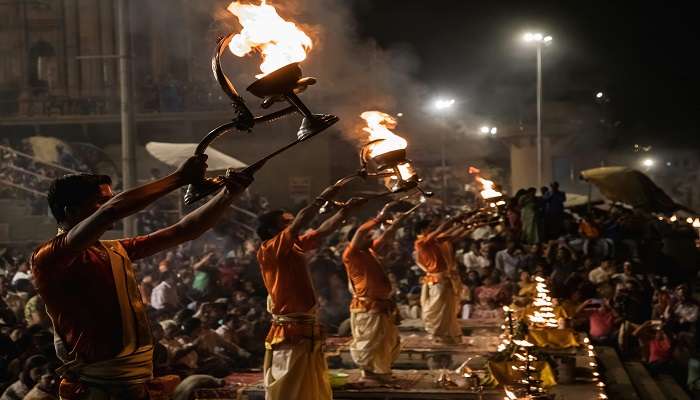
Dashashwamedh Ghat is one of the most prominent and ancient ghats on the Ganges banks in Varanasi, India. Rich in mythology, spiritual fervour, and vibrant cultural practices, it is a testament to the city’s profound connection with Hindu rituals and traditions. This Dashashwamedh ghat, with its historical significance and daily activities, draws millions of pilgrims, tourists, and seekers from around the globe, offering a microcosmic view of India’s complex religious and cultural ethos
About Dashashwamedh Ghat Varanasi
Discover Dashashwamedh Ghat, an ancient and significant ghat in Varanasi renowned for its deep spiritual rituals and rich cultural heritage. Here’s everything you need to know before visiting.
Dashashwamedh Ghat Varanasi Timings
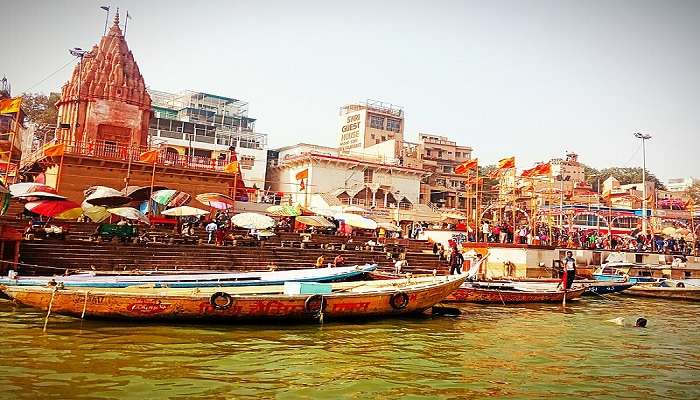
Dashashwamedh Ghat in Varanasi operates 24 hours a day. Early morning visits at sunrise or evening visits for the Ganga Aarti are ideal. The evening Ganga Aarti begins at approximately 6 PM during winter and 7 PM in summer. This spiritual ceremony features priests conducting rituals with brass lamps, singing hymns, and drawing large crowds.
Dashashwamedh Ghat Entry Fees
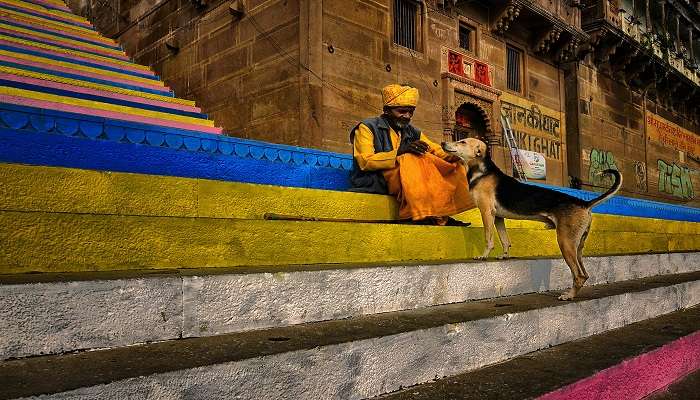
There is no entry fee to visit Dashashwamedh Ghat in Varanasi, India. However, separate charges may apply for boat rides and other activities. Additionally, you can pay between Rs 1,000 and Rs 2,000 for VIP seats near the Aarti platforms. Renting a chair on a balcony overlooking the ceremony is also an option.
Dashashwamedh Ghat History

“Dashashwamedh” translates to the “Ghat of Ten Horses.” It is derived from the ancient legend that Lord Brahma performed a ten-horse sacrifice, or “Dashashwamedh Yajna,” to honour Lord Shiva. This legend underscores the ghat’s deep-rooted connection to Hindu mythology and its standing as a site of immense religious importance.
The ghat has undergone several transformations over the centuries. It is believed to have been built by Peshwa Balaji Baji Rao in the 18th century and later renovated by the Maratha queen Ahilyabai Holkar in the 1770s. These renovations have preserved its ancient aura while adapting to the needs of contemporary worshippers and visitors.
Also Read: Places to visit in Varanasi
Dashashwamedh Ghat Aarti
Dashashwamedh Ghat is a focal point for various spiritual practices and rituals reflecting the depth and diversity of Hindu religious life. Every day, thousands of devotees participate in numerous rituals, ranging from daily prayers and meditation to elaborate ceremonies.
1. Ganga Aarti
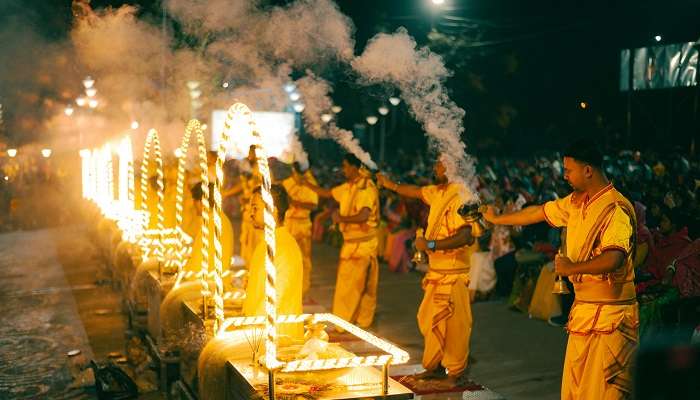
One of the most mesmerising and significant rituals at Dashashwamedh Ghat is the Ganga Aarti. This daily evening ceremony is dedicated to the river Ganges, considered a goddess in Hinduism. The aarti involves a highly choreographed performance by priests who use large fire lamps, incense, and conch shells, accompanied by hymns and chants. The synchronisation of movements and the resonating sound of bells create a captivating spectacle attracting large crowds of devotees and tourists.
2. Pind Daan

Another significant practice at the ghat is performing rituals for the departed souls, known as Pind Daan. This ritual is believed to liberate the souls of ancestors, providing them peace and paving their way to the afterlife. Families across India come to Dashashwamedh Ghat to perform these rites, underscoring the ghat’s role in connecting the living with their ancestral heritage.
3. Bathing Rituals
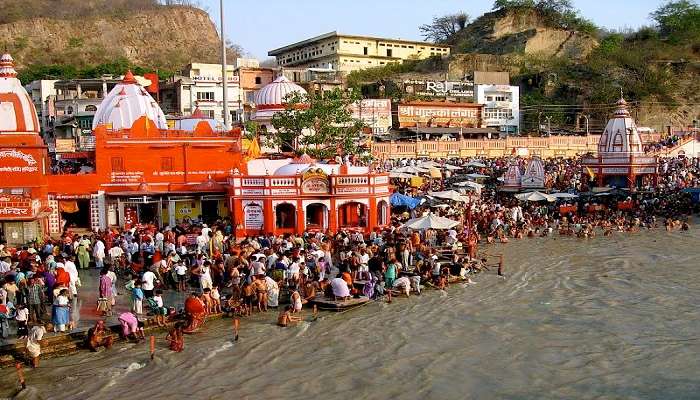
Taking a dip in the Ganges at Dashashwamedh Ghat is considered an act of purification. Devotees believe bathing in the holy river cleanses them of their sins and brings spiritual renewal. This practice is especially prominent during auspicious occasions and festivals when the ghat teems with people seeking spiritual cleansing.
4. Sacred Offerings

Offering flowers, diyas (oil lamps), and other sacred items to the Ganges is a familiar ritual at the ghat. These offerings are a form of devotion and gratitude to the river goddess, seeking her blessings for prosperity, health, and well-being.
Best Time to Visit Varanasi
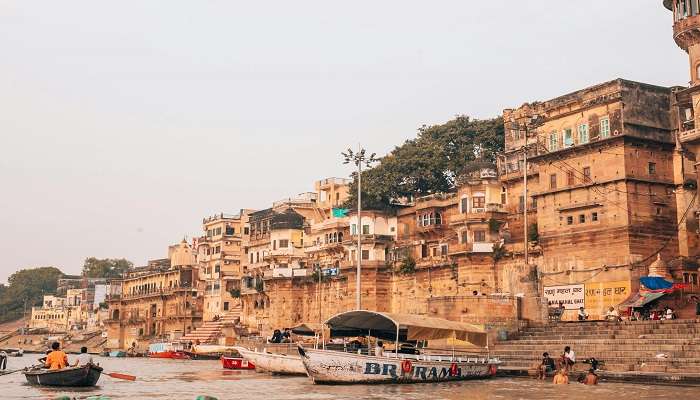
The ideal time to visit Varanasi is from October to March when the weather is cool and pleasant and perfect for exploring the ghats and temples. Winter provides the most comfortable sightseeing temperatures and features essential festivals such as Dev Deepawali and Holi. The winter months (October to March) provide favourable conditions with cool temperatures, clear skies, and reduced humidity. It’s best to avoid the monsoon season, as heavy rains can flood the ghats and complicate access.
Related Post: Hotels Near Dashashwamedh Ghat
Sightseeing and Tourist Attractions Near Dashashwamedh Ghat
After visiting the aarti at Dashashwamedh Ghat, head to the nearby tourist attractions to make your Banaras itinerary worthwhile. Here are our top 4 picks:
1. Assi Ghat

At the southern edge of Varanasi, Assi Ghat offers a serene atmosphere where the Ganges meets the Assi River. This ghat is famous for its morning yoga sessions and evening aarti, attracting spiritual seekers and tourists alike. Visitors can enjoy boat rides, explore nearby cafes, and witness local life along the riverbank. It’s an ideal spot for photography, strolls, or simply soaking in the tranquillity of the Ganges.
- Location: Nagwa Rd, Assi ghat, Shivala, Varanasi, Uttar Pradesh 221005
- Timings: Opens 24 hours
- Entry Fee: Free
2. Shri Kashi Vishwanath Temple
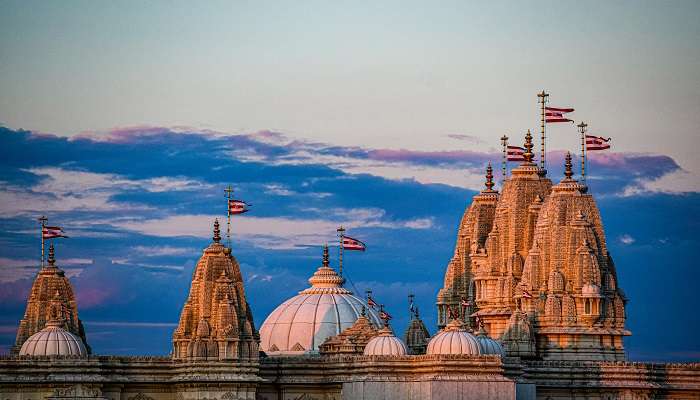
Kashi Vishwanath Temple, a renowned temple dedicated to Lord Shiva, is one of India’s most sacred Hindu sites. Situated close to Dashashwamedh Ghat, the temple is a must-visit for pilgrims and tourists. Its rich history and stunning architecture create a vibrant atmosphere. Devotees can participate in rituals, immerse themselves in spiritual chants, and explore the temple’s shrines. Nearby markets offer a glimpse into local artisanship, perfect for souvenir shopping.
- Location: Lahori Tola, Varanasi, Domari, Uttar Pradesh 221001
- Timings: Daily, 3 am–11 pm
- Entry Fee: Free
3. Manikarnika Ghat

Known as the primary cremation ghat in Varanasi, Manikarnika Ghat is steeped in culture and tradition. Here, witnessing the last rites of loved ones is seen as a way to attain moksha (liberation). Visitors can observe the rituals respectfully and understand the profound beliefs surrounding life and death in Hinduism. Surrounding the ghat are small temples and shops where one can learn more about the history and significance of this sacred place.
- Location: Near Lalita Ghat, Ghats of Varanasi, Lahori Tola, Varanasi, Domari, Uttar Pradesh 22100
- Timings: Opens 24 hours
- Entry Fee: Free
4. Sankat Mochan Temple
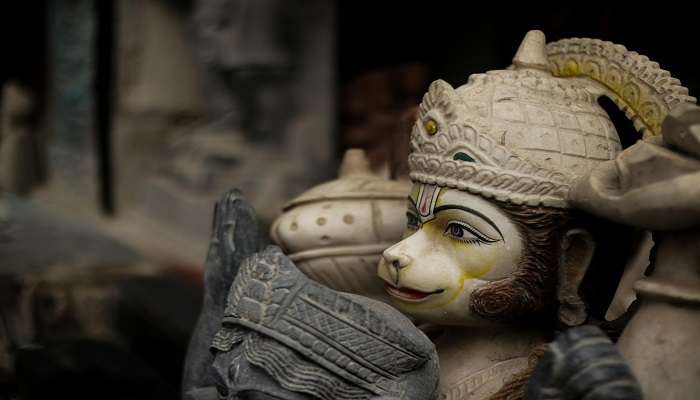
A vital site for devotees, Sankat Mochan Temple is dedicated to Lord Hanuman and is known for its peaceful ambience. Located a short distance from Dashashwamedh Ghat, this temple offers a place to seek blessings and solace. Visitors can engage in devotional singing, participate in rituals, and enjoy the lush surroundings. Nearby, locals often share stories about the temple’s history, making it a great spot to immerse yourself in the spiritual culture of Varanasi.
- Location: Saket Nagar Colony, Sankata Mochan Leprosy, Varanasi, Uttar Pradesh 221005
- Timings: Daily, 5 am–10 pm
- Entry Fee: Free
How to Reach

- By air
You can fly into Lal Bahadur Shastri International Airport (VNS), a key hub in India that offers numerous domestic and international travel options worldwide.
- By train
Varanasi has several railway stations, including Varanasi Junction, Kashi Railway Station, and Banaras Railway Station. Trains arrive at these stations from major cities across India.
- By road
Varanasi is accessible through National Highways 19 and 31. Travellers can choose from various transport options, including private and government buses. Driving your own car is a convenient alternative for those who prefer personal travel, making the trip to this historic city easily attainable.
You may also like to read: Ratneshwar Mahadev Temple
Ensuring the preservation of its sanctity and addressing its challenges will be crucial for maintaining its status as a revered and vibrant site. By balancing tradition with modernity and fostering sustainable practices, Dashashwamedh Ghat can continue to be a beacon of spiritual and cultural richness for future generations. Start your trip to Varanasi today.
For our editorial codes of conduct and copyright disclaimer, please click here.
Cover Image Source: Pexels
Frequently Asked Questions About Dashashwamedh Ghat
What time is the Aarti in Dashashwamedh Ghat?
The Ganga Aarti at Dashashwamedh Ghat in Varanasi, India, takes place in the evening and starts around 6 PM in winter and 7 PM in summer. The aarti lasts for about 45 minutes.
What is the historical significance of Dashashwamedh Ghat?
Dashashwamedh Ghat is historically significant because it is associated with the ancient legend of Lord Brahma performing a ten-horse sacrifice to honour Lord Shiva. This ghat, built in the 18th century and renovated by Queen Ahilyabai Holkar, symbolises cosmic creation.
What can visitors expect during the Ganga Aarti at Dashashwamedh Ghat?
Ganga Aarti, a daily evening ritual at Dashashwamedh Ghat, involves priests performing synchronised movements with large fire lamps accompanied by hymns, chants, and the sound of conch shells. It creates a captivating spiritual spectacle that draws large crowds of devotees.
Can we bathe at Dashashwamedh Ghat?
Yes, people bathe at Dashashwamedh Ghat in Varanasi, India. Many claim the bathing facilities are well-organized. Some believe that a morning bath in the ghat cleanses sins. Others argue that bathing at five specific ghats in a particular order on the same day can prevent reincarnation.
What is Dashashwamedh Ghat famous for?
Dashashwamedh Ghat in Varanasi, India, is renowned for its Ganga Aarti, an evening river worship ceremony. This ghat is a significant spiritual hub that reflects Varanasi's vibrant cultural and religious heritage. Moreover, it carries historical importance, as legends state that Brahma conducted ten Ashwamedha sacrifices at this location.
How many ghats are there in Varanasi?
Varanasi, India features approximately 88 ghats, which are steps along the riverfront that provide access to the Ganges River. Among the most renowned ghats in Varanasi are Dashashwamedh Ghat, Assi Ghat, Manikarnika Ghat, and Harishchandra Ghat. Additionally, Varanasi is home to numerous other ghats, including Ganga Mahal Ghat, Riva Ghat, Tulsi Ghat, Bhadaini Ghat, Janaki Ghat, Anandamayi Ghat (Mata Anandami), Vachcharaj Ghat, and many more.
People Also Read:
Manikarnika Ghat Narad Ghat Bhadaini Ghat

With a passion for exploring and travelling to the roads long forgotten, experience the world through enthralling stories and adventures. Join me as I share my experiences at some of the world’s most popular tourist destinations and quench that pestering curiosity with something exciting!











